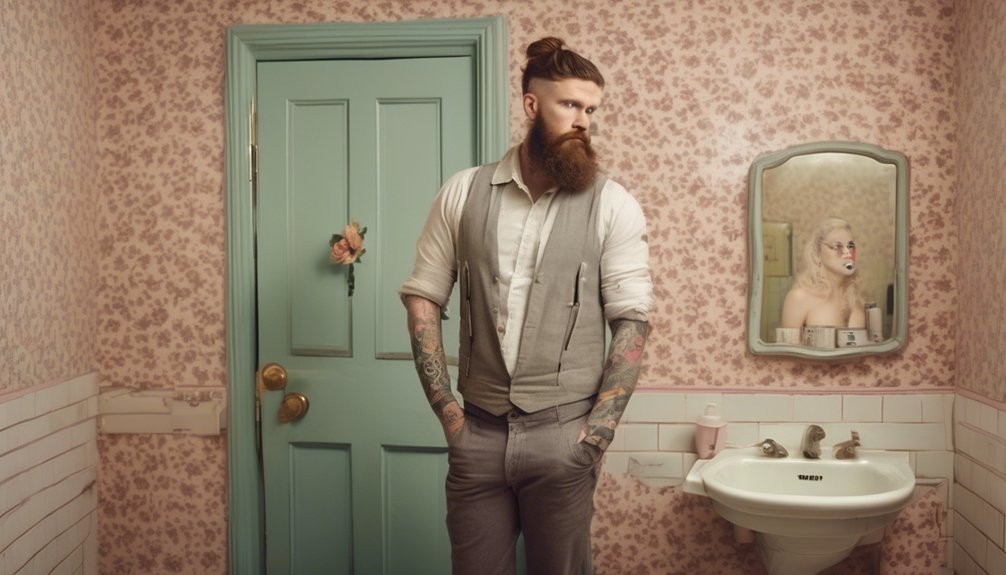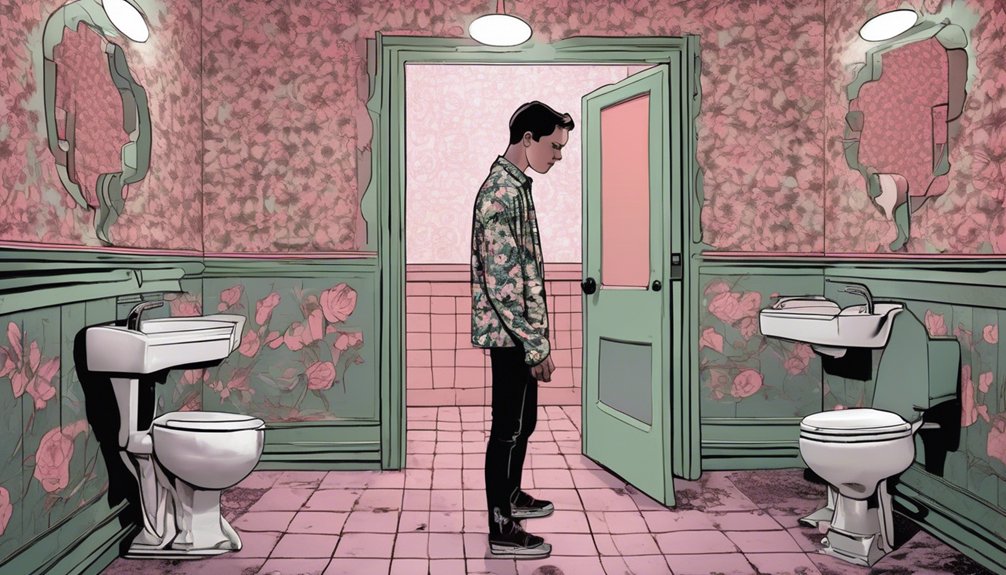The Illogic of Bathroom Bills: Forcing Trans Men Into Women’s Spaces


Table of Contents
ToggleImagine being told you must use a space that doesn’t align with your identity. Bathroom bills that push trans men into women’s spaces create an illogical situation, driven by misconceptions about safety. These laws can put trans men in vulnerable positions, subjecting them to potential harassment. You may question if these policies truly improve safety or just perpetuate discrimination. Consider the impact on dignity and equality and what this means for society.
Despite claims that bathroom bills improve safety, evidence does not support the notion that transgender individuals pose a threat in restrooms. You might believe that these bills address genuine safety concerns, but data reveals otherwise. Reports indicate that transgender people are more often victims rather than perpetrators of violence in restrooms. The misconception about safety leads to misguided policies that don’t bolster protection but rather exacerbate discrimination. By perpetuating unfounded fears, these laws create environments where transgender individuals feel unsafe and marginalized. Understanding these safety misconceptions is vital when evaluating policy implications. Instead of addressing real safety issues, such bills divert attention and resources away from more pressing concerns, ultimately failing to deliver the intended security they promise.

When lawmakers enforce bathroom restriction laws, trans men face significant challenges that go overlooked in public discourse. These laws force trans men into women’s spaces, complicating their bathroom experiences and heightening discomfort. Trans men, who often present as male, are perceived as out of place in women’s restrooms, leading to potential confrontations and emotional distress.
| Challenge | Impact |
|---|---|
| Misgendering | Emotional distress and identity invalidation |
| Increased scrutiny | Heightened anxiety and potential harassment |
| Safety concerns | Fear of confrontations and vulnerability |

How do these laws inadvertently create loopholes that could be exploited? Bathroom bills aimed at restricting trans individuals’ access unintentionally open doors to cisgender deception. By mandating that trans men use women’s bathrooms, you increase exploitation risks, enabling cis men to enter these spaces by simply claiming to be trans men. Such legal frameworks lack mechanisms to verify gender identity without infringing on privacy, thereby presenting a significant loophole. The fear of cisgender men posing as trans women is often cited, yet these laws paradoxically facilitate the opposite risk. In practice, they do little to improve safety and instead create a compromised environment where exploitation is more feasible. This unintended consequence highlights the flawed rationale behind these restrictive measures.
Examining the historical context and current practices surrounding bathroom bills reveals a pattern of societal debates over public restroom access that dates back decades. You can trace these issues back to racial segregation, where public restrooms were divided by race, a practice eventually deemed unjust. Today, bathroom bills targeting transgender individuals echo similar discrimination under the guise of safety concerns. The legislative history shows repeated attempts to legislate restroom access, often amplifying social stigma against marginalized groups. Current practices vary widely, with some jurisdictions adopting inclusive policies, while others enforce restrictive ones. This patchwork of laws highlights ongoing controversies and the challenges of balancing privacy, safety, and inclusivity in public spaces, reflecting deep-rooted societal biases and fears.
In considering the human rights perspective, it’s essential to recognize that bathroom bills targeting transgender individuals often violate fundamental principles of dignity and equality. These laws can strip away the human dignity of trans people by forcing them into spaces that don’t align with their gender identity, which can lead to distress and danger. Legal protections should guarantee safety and respect for all individuals, yet these bills fail to uphold that standard. Here’s what’s at stake:
Bathroom bills impact public perception by shaping how transgender individuals are viewed in society. One observes media portrayals often misrepresent trans people, casting them as threats rather than individuals seeking safety and dignity. These laws can reinforce negative stereotypes, leading the public to perceive trans people as deceptive or dangerous. By focusing on these narratives, they ignore the real issue: ensuring everyone has safe access to public facilities without fear or discrimination.
You’ve seen bathroom bills face significant legal challenges across different states. Legal precedents often play an essential role as courts evaluate whether these laws violate civil rights. State legislation must balance privacy concerns with anti-discrimination laws. Some states have struck down these bills, citing conflicts with constitutional protections. As you investigate further, you’ll find that ongoing debates and court decisions continue to shape the legal landscape surrounding bathroom access.
Imagine traversing a maze blindfolded; that’s the mental distress bathroom bills can cause transgender individuals. You face constant invalidation of your identity, leading to heightened anxiety and stress. These laws force you into spaces that don’t align with your gender, exacerbating feelings of alienation. Research shows that such environments can greatly impact mental health, highlighting the importance of creating inclusive policies that validate and support everyone’s identity.
You’re curious about whether there are documented cases of cis men exploiting bathroom bills. Despite concerns, there’s no substantial evidence of such exploitation affecting bathroom safety. Investigative reports and studies haven’t confirmed incidents where cis men posed as trans individuals to enter women’s spaces. This lack of documented cases suggests that the fear of cis men exploiting these laws may be more about perpetuating myths than actual occurrences.
Imagine advocacy groups as architects of a bridge connecting understanding and equality. You play an essential role in opposing bathroom bills using advocacy strategies that highlight inclusivity. By building coalitions, you unite diverse voices to amplify the message against discrimination. Your informed campaigns focus on educating the public and policymakers, showing how these bills harm rather than protect, ensuring everyone can cross that bridge to a fairer, more compassionate society.
Imagine walking into a restroom, the air thick with anxiety, because the law misplaces you. These bathroom bills don’t just miss the mark on safety; they paint a target on trans men, exposing them to ridicule and fear. When policies force a mismatch of identity and space, they unravel the fabric of dignity and equality. By addressing these misguided laws, you can champion a world where everyone walks through doors without hesitation, wrapped in the security of their true identity.
 News and AdvocacyNovember 14, 2025Rainbow Victories: 2025’s Most Pro-LGBTQ+ States Revealed
News and AdvocacyNovember 14, 2025Rainbow Victories: 2025’s Most Pro-LGBTQ+ States Revealed News and AdvocacyNovember 14, 2025Transgender Sanctuary States: Protecting Rights, Providing Hope
News and AdvocacyNovember 14, 2025Transgender Sanctuary States: Protecting Rights, Providing Hope Featured PostsNovember 13, 2025When Restroom Policing Backfires: The Hotel That Went Too Far
Featured PostsNovember 13, 2025When Restroom Policing Backfires: The Hotel That Went Too Far Featured PostsNovember 13, 2025Sex, Safety, and Seduction: A Trans Girl’s Guide to Hookups
Featured PostsNovember 13, 2025Sex, Safety, and Seduction: A Trans Girl’s Guide to Hookups